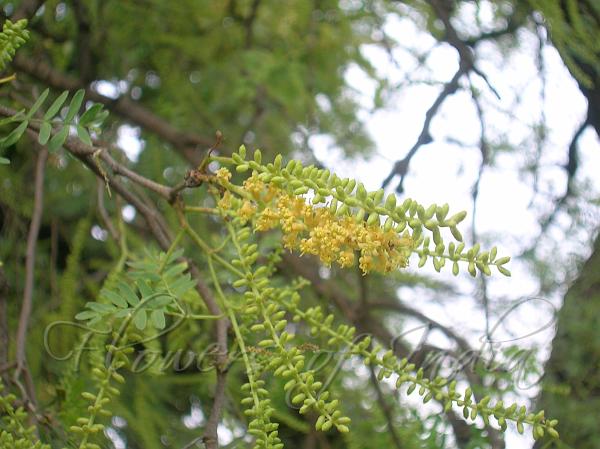|
| Khejri Tree |
|

|

| File size | 964182 |
| Original date | 4/8/07 5:24 PM |
| Resolution | 2048 x 1536 |
| Flash | Flash did not fire, auto |
| Focal length | 11.7mm |
| Exposure time | 1/58s |
| Aperture | 4.0 |
| Focus Distance | |
| Metering Mode | Partial |
| Camera make | NIKON |
| Camera model | E3700 |
| Sensor type |
|
|
|
|
Photo: |
Botanical name: Prosopis cineraria Family: Mimosaceae (Touch-me-not family)
Synonyms: Mimosa cineraria, Prosopis spicata, Prosopis spicigera
Synonyms: Mimosa cineraria, Prosopis spicata, Prosopis spicigera
Khejri Tree is a small moderate sized evergreen
thorny tree, with slender branches armed with conical thorns and with
light bluish-green foliage. Leaves are double compound. The leaflets
are dark green, and have a tiny point. The tree is evergreen or nearly
so. It produces new flush leaves before summer. The flowers are small
in size and yellow or creamy white in colour, appear from March to May
after the new flush of leaves. The pods are formed soon thereafter and
grow rapidly in size attaining full size in about two months time.
Historically Khejri Tree has played a significant role in the rural
economy in the northwest arid region of Indian sub-continent. This tree
is a legume and it improves soil fertility. It is an important
constituent of the vegetation system. It is well adapted to the arid
conditions and stands well to the adverse vagaries of climate and
browsing by animals. Camels and goats readily browse it. In areas open
to goat browsing, the young plants assume cauliflower shaped bushy
appearance.
| Identification credit: Tabish | Photographed in Lodhi Garden, New Delhi & Bijnor, Uttar Pradesh. |
• Is this flower misidentified? If yes,